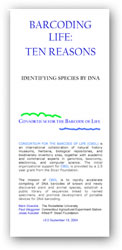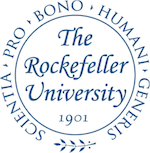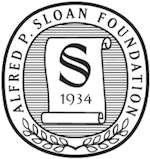THE BARCODE OF LIFE:
a short DNA sequence, from a uniform locality on the genome, used for identifying species

DNA barcoding:
an emerging global standard for identifying species

DNA Barcode Blog:
where we write about and illustrate the latest news about DNA barcoding
Partners
Consortium for the Barcode of Life (CBOL) – Barcode of Life Database (BOLD) – All Birds Barcoding Initiative (ABBI) – All Leps Barcode of Life – Canadian Centre for DNA Barcoding (CCDB) – Census of Marine Life (CoML) – Encyclopedia of Life (EOL) – Fish Barcode of Life (FISHBOL) – FishBase – GenoMicron Blog – International Barcode of Life (iBOL) – Marine Barcode of Life (MARBOL) – Plant DNA Barcoding – Polar Barcode of Life (PolarBOL) – Sponge Barcoding Project (SpongeBOL) – The Beagle Project Blog – Urban Barcode Project
DNA Barcoding Projects
DNA Barcoding Resources
Barcoding Life Highlights 2013
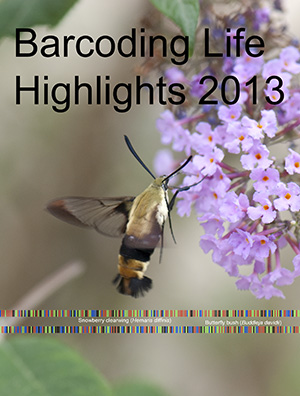
Illustrated report sponsored by International Barcode of Life (iBOL) and Consortium for the Barcode of Life (CBOL)
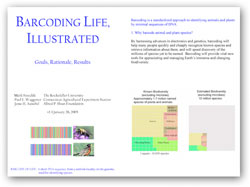
A brief brochure on the goals, rationale, and early results of this new technology for species identification and biodiversity science. (Jan 2005)
Top Ten Reasons for Barcoding Life
- Works with fragments.
- Works for all stages of life.
- Unmasks look-alikes.
- Reduces ambiguity.
- Makes expertise go further.
- Democratizes access.
- Opens the way for an electronic handheld field guide, the Life Barcoder.
- Sprouts new leaves on the tree of life.
- Demonstrates value of collections.
- Speeds writing the encyclopedia of life.
download illustrated flyer (PDF) (Sep 2004)
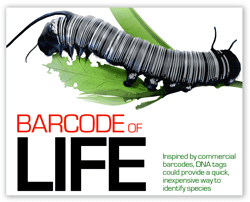
An engagingly illustrated update on DNA barcoding (Scientific American, Oct 2008)
Acknowledgments
About the Bar Code of Life site
This web site is an outgrowth of
the Taxonomy, DNA, and Barcode of Life meeting held at Banbury
Center, Cold Spring Harbor Laboratory, September 9-12, 2003.
It is managed by Mark Stoeckle at the Program
for the Human Environment (PHE) at The Rockefeller University.
Contact: mark.stoeckle@rockefeller.edu
About the Program
for the Human Environment
The involvement of the Program for the Human Environment in DNA
barcoding dates to Jesse Ausubel's attendance in February 2002
at a conference in Nova Scotia organized by the Canadian Center
for Marine Biodiversity. At the conference, Paul Hebert
presented for the first time his concept of large-scale DNA
barcoding for species identification. Impressed by the
potential for this technology to address difficult challenges
in the Census of Marine Life, Jesse agreed with Paul on
encouraging a conference to explore the contribution
taxonomy and DNA could make to the Census as well as other large-scale
terrestrial efforts. In his capacity as a Program Director of
the Sloan Foundation, Jesse turned to the Banbury Conference
Center of Cold Spring Harbor Laboratory, whose leader Jan
Witkowski prepared a strong proposal to explore both the
scientific reliability of barcoding and the processes that
might bring it to broad application. Concurrently, PHE
researcher Mark Stoeckle began to work with the Hebert lab on
analytic studies of barcoding in birds. Our involvement in
barcoding now takes 3 forms: assisting the organizational
development of the Consortium for the Barcode of Life and the
Barcode of Life Initiative; contributing to the scientific
development of the field, especially by studies in birds, and
contributing to public understanding of the science and
technology of barcoding and its applications through improved
visualization techniques and preparation of brochures and other
broadly accessible means, including this website. While the
Sloan Foundation continues to support CBOL through a grant to
the Smithsonian Institution, it does not provide financial
support for barcoding research itself or support to the PHE for
its research in this field.








